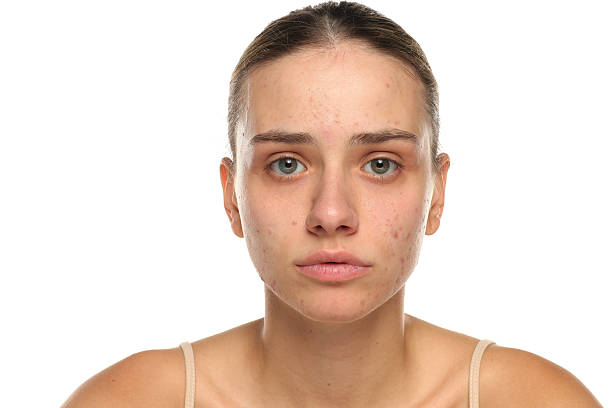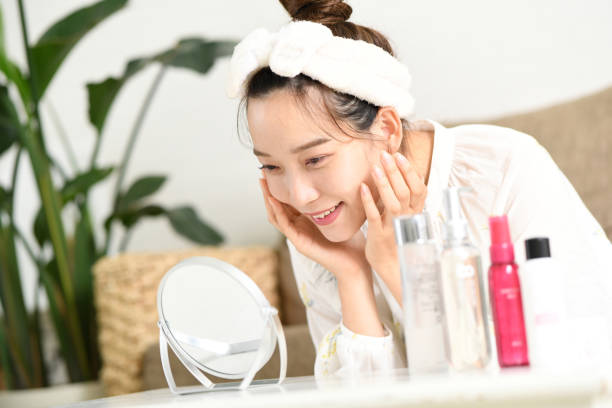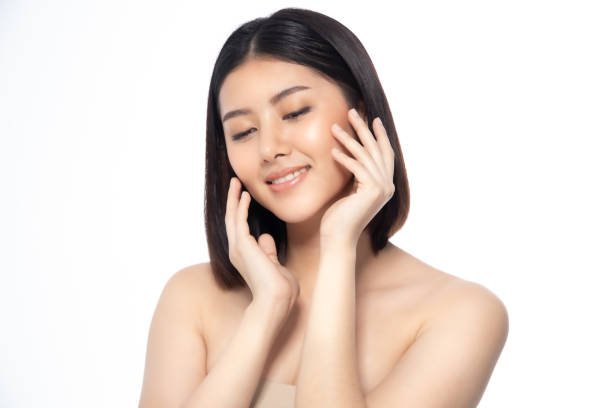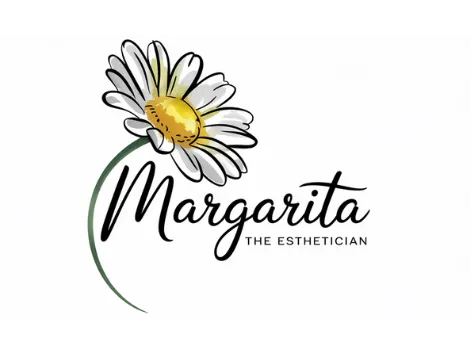
Acne & Clear Skin Treatments
So, You Want Clear Skin? Let's Talk.
Let’s be real for a second—acne sucks. Whether it's one angry pimple before a big event or a whole battalion marching across your chin, breakouts can mess with your mood, confidence, and your skincare game. But guess what? You’re not alone, and you’re definitely not powerless.
This is your no-Bias, casual-yet-scientific guide to Acne & Clear Skin Treatments. We're diving into everything from the root causes of acne (it's not just junk food) to game-changing ingredients like niacinamide, retinoids, and salicylic acid. We’re breaking down myths, analyzing what actually works, and helping you build a skincare strategy that’s tailored to you—not some generic influencer with airbrushed skin.
Plus, I’ll be dropping in my favorite tried-and-tested products, handy tips, and juicy myths to bust. Deep-dive to IPL treatments, daily skincare routines, and lifestyle tweaks you didn’t know you needed.
Let’s start fresh. Literally.
What Causes Acne and How Do Treatments Address These Causes?

VladimirFLoyd via Pixabay
Acne isn’t just a teenage drama. It's a science-backed, multifactorial skin condition that can follow you into your twenties, thirties, and beyond. Understanding the root cause is the first step toward finding treatments that actually work.
Here’s the acne cocktail:
Excess sebum (oil): Your sebaceous glands go into overdrive, often due to hormones, producing too much oil that clogs pores.
Clogged pores: Dead skin cells, dirt, and oil get trapped in hair follicles, forming blackheads or whiteheads.
Bacteria: Particularly Propionibacterium acnes (a.k.a. P. acnes), which feeds on the trapped gunk and causes inflammation.
Inflammation: Your immune system reacts to the bacteria and clogged pores, often causing redness, swelling, and even pain.
Hormonal shifts: These play a huge role, especially for women during menstruation, pregnancy, puberty, or stress-induced fluctuations.
The best acne treatments target one or more of these issues:
Salicylic acid is a beta hydroxy acid that breaks through oil to exfoliate inside the pores.
Benzoyl peroxide kills acne-causing bacteria and reduces inflammation.
Adapalene (a third-generation retinoid) promotes skin turnover, pushes clogged material to the surface, and prevents future blockages.
Niacinamide is a soothing antioxidant that calms redness, strengthens the skin barrier, and balances oil production.
Understanding your unique acne type—whether it's hormonal, comedonal, cystic, or a mix—helps in picking the right tools for the job. There’s no one-size-fits-all solution, and that’s okay. The key is tailoring the treatment to your skin’s specific needs and sensitivities.
“Understanding your acne triggers is the first step toward treating it effectively.” – Marie Claire UK
The Real Timeline: How Long Do Acne Treatments Take to Work?
Spoiler alert: There’s no magic overnight fix. And if someone on TikTok tells you otherwise, run. Most acne treatments take time because your skin works in 28-day cycles (give or take). So when you apply a product today, you’re really prepping your skin for what it’s going to look like weeks from now.
Topical treatments (like benzoyl peroxide, salicylic acid, niacinamide, or adapalene) usually begin showing results in 6 to 12 weeks, depending on the severity of your acne.
Oral medications (like antibiotics or hormonal treatments like birth control or spironolactone) may take up to 3 to 6 months to reveal their full effect, as they work systemically and slowly.
During the first couple of weeks, some people experience what’s called a "purge"—where clogged pores begin to surface and it may look worse before it gets better. Stick with it. This isn’t a sign the product’s failing—it’s a sign it’s working. The key is patience and consistency.
Also, keep your expectations real. These aren’t filters in a bottle. The goal is clearer skin, not perfect skin. Celebrate progress, not perfection. And always track your journey—take photos every two weeks to see the subtle but powerful improvements.
Benzoyl Peroxide vs Salicylic Acid: Which One's Right for You?
Let’s settle this age-old debate. Both are acne-fighting legends, but they work differently—and choosing the right one depends on your skin type and breakout pattern.
If your acne is red, painful, and inflamed, benzoyl peroxide is your warrior. It goes after the bacteria that’s causing all the chaos. Just be careful—it’s potent and can cause dryness, especiallif used too often or with other strong products.
If you’re dealing with blackheads, small whiteheads, or clogged pores that aren’t too angry, then salicylic acid is the MVP. It’s gentler, penetrates the pore lining, and keeps things clear without overly drying out your skin.
Bonus tip: If your skin can handle it, use both—salicylic acid in the morning and benzoyl peroxide at night (or vice versa). But always moisturize and watch for irritation.
Still unsure which to try first? Start with salicylic acid. It’s less likely to irritate and helps with texture and mild acne. If that’s not enough, bring in the big guns with benzoyl peroxide for more intense breakouts.
Can I Use Retinoids Like Adapalene With Other Acne Treatments?
Yes—but you’ve got to be smart about it. Think of retinoids like the tough love coach of your skincare team. They're powerful, effective, and a little unforgiving if you don’t respect the learning curve.
Adapalene (like Differin) is one of the gentler prescription-strength retinoids available over-the counter. It promotes cell turnover, unclogs pores, and reduces inflammation. But it’s strong stuff. Combining it with other active ingredients like AHA, BHA, or benzoyl peroxide requires timing and strategy.
Here’s how to play it safe:
Use adapalene only at night—your skin renews as you sleep, and retinoids increase sun sensitivity.
Don’t layer it directly with benzoyl peroxide unless directed by a dermatologist. Alternate nights if needed.
Pair it with a gentle, non-comedogenic moisturizer to reduce irritation. Think of it as your buffer.
Start slow. Apply it 2–3 nights per week for the first couple of weeks before building up.
Pro Tip: A pea-sized amount is more than enough. Applying more won’t speed up results it’ll just make your skin angrier.
With consistency and care, adapalene can be a game changer—especially for those with stubborn or cystic breakouts.
Top 5 Acne Treatment Products You Should Know About

No two faces are the same, but these five products have earned their spot in thousands of routines. They're affordable, effective, and backed by both dermatologists and the skincare community.
1. Differin Adapalene Gel 0.1%
This FDA-approved, over-the-counter retinoid used to be prescription-only. Now? You can grab it from your nearest drugstore—and it’s a total game changer.
What it does: Promotes skin cell turnover, prevents clogs, reduces inflammation, and helps fade post-acne pigmentation.
Why it's loved: Less irritating than traditional retinoids and suitable for long-term use.
Start with every other night to avoid peeling, and don’t forget your SPF in the morning.
2. The Ordinary Salicylic Acid 2% Solution
Simple, budget-friendly, and super effective—this BHA exfoliant is perfect for acne-prone or textured skin.
What it does: Penetrates pores to dissolve oil and dead skin cells.
Why it's loved: Lightweight texture, great for spot treatment or all-over use.
Where to get it: Sephora, The Ordinary’s site.
Pro tip: Start slow, especially if your skin is reactive. Use 1–3x a week and adjust
3. The Ordinary Niacinamide 10% + Zinc 1%
This little bottle is a multitasking hero.
What it does: Balances oil, reduces redness, minimizes pores, and strengthens the skin barrier.
Why it's loved: Non-comedogenic and layers well with actives.
Where to get it: Ulta, Amazon, The Ordinary.
Use it after cleansing and before heavier serums or creams.
4. Celeteque Dermo Science Acne Solutions Acne Spot Corrector Gel
A cult favorite in the Philippines—and for good reason.
What it does: Targets and dries out pimples while reducing redness.
Why it's loved: Budget-friendly, accessible, and effective.
Where to get it: Watsons PH, Shopee, Lazada.
Perfect for students or beginners who want something fuss-free and lightweight.
5. Benzac AC 5% Gel
This classic benzoyl peroxide gel is no joke—it tackles bacteria like a champ.
What it does: Kills acne-causing bacteria, reduces swelling, and dries up pimples fast.
Why it's loved: Trusted by dermatologists for decades.
Where to get it: Watsons PH, Mercury Drug.
Use only a pea-sized amount on active pimples. And always moisturize afterward.
Tip: Rotate these products based on your skin’s mood. If it’s inflamed, go for niacinamide. If it’s congested, salicylic acid. If it’s angry and hormonal—call in Differin
Daily Skincare Routine to Prevent Acne Flare-Ups
Consistency is everything when it comes to clear skin. Even the best products won’t work if they’re used sporadically or in the wrong order. Your routine doesn’t need to be a 10-step ordeal. In fact, simplicity is often better for acne-prone skin.
Morning Routine:
Cleanser: Use a gentle, low-pH cleanser to remove overnight oil and prep your skin.
Toner (optional): If using, choose alcohol-free formulas with soothing ingredients like green tea or rose water.
Treatment: Apply active ingredients like niacinamide or salicylic acid, depending on your skin’s needs.
Moisturizer: Yes, even oily skin needs hydration. Choose oil-free or gel-based options.
Sunscreen: Non-negotiable. SPF protects against UV damage, pigmentation, and irritation
especially if you use actives.
Night Routine:
Double cleanse (if wearing sunscreen or makeup): Use a balm or micellar water followed by a gentle cleanser.
Treatment: Retinoids like adapalene or targeted acne serums.
Moisturizer: Lock in hydration and support skin barrier repair.
Spot treatment (if needed): Apply benzoyl peroxide or sulfur-based spot treatments only on active pimples.
For a complete routine guide with product suggestions, check out Daily Skincare Routine to Prevent Acne Flare-Ups
IPL Acne Reduction: Venus Versa for Stubborn Breakouts
If you've tried all the creams, acids, and serums and you're still seeing no improvement—say hello to IPL (Intense Pulsed Light). Venus Versa is one of the most advanced IPL systems available, designed to tackle acne from the inside out.
How It Works:
IPL uses bursts of light to target P. acnes bacteria beneath the skin, reduce inflammation, and shrink oil glands. It’s non-invasive and painless, making it perfect for those with sensitive skin or cystic acne.
Benefits:
Visible reduction in redness and active acne after 3–4 sessions
Helps fade post-acne marks and discoloration
Works well alongside topical treatments
Want the full scoop on treatment costs, expectations, and recovery? Explore IPL Acne Reduction: Venus Versa for Stubborn Breakouts
Lifestyle Hacks to Reduce Hormonal and Stress-Induced Acne
Skincare is only one piece of the puzzle. Your lifestyle habits have a direct impact on how your skin behaves. Here are some changes that can make a massive difference:
Sleep: Aim for 7–9 hours. Your skin heals and regenerates overnight.
Diet: Limit dairy, sugar, and high-glycemic foods. Instead, eat more omega-3s, zinc-rich foods, and leafy greens.
Exercise: Regular workouts improve circulation and detoxify through sweat—but always cleanse your face after.
Stress Management: Chronic stress elevates cortisol, which triggers oil production. Try yoga, journaling, or meditation.
Hygiene Habits: Change pillowcases often, sanitize your phone, and avoid touching your face throughout the day.
For more insider tips on holistic skin health, explore Lifestyle Hacks to Reduce Hormonal and Stress-Induced Acne
Frequently Asked Questions (FAQs)
1. What causes acne and how do treatments work?
Acne can be triggered by excess oil production, clogged pores, bacteria, inflammation, and hormonal fluctuations. Treatments target these causes through exfoliation, anti-bacterial action, oil regulation, and cell turnover.
2. How long does it take for acne treatments to show results?
Topical treatments typically take 6–12 weeks, while oral medications may take 3–6 months. Purging may occur early on but should subside with consistent use.
3. Can I combine salicylic acid and benzoyl peroxide?
Yes, but with caution. Start by using them at different times of the day or on alternating days to reduce irritation. Always moisturize and wear SPF.
4. Are natural remedies effective for acne?
They can offer mild benefits—like tea tree oil for inflammation or aloe for soothing—but they’re not substitutes for clinically proven treatments, especially for moderate to severe acne.
5. What’s the best skincare routine for acne-prone skin?
Keep it simple: cleanse, treat, moisturize, and protect (SPF). Tailor active ingredients like retinoids or BHAs to your skin's needs, and stay consistent for lasting results.
Clear Skin is a Journey, Not a Destination
You made it to the end (go you!). Now you know the why, the how, and the what when it comes to acne and clear skin treatments. From ingredient breakdowns to top-tier products and lifestyle hacks, you’ve got everything you need to take control of your skin.
Just remember:
Be consistent.
Be patient.
And treat your skin like it’s your BFF, not your enemy.
Acne doesn’t define you. You’re doing great. Progress isn’t always linear, but every step you take matters. Bookmark this page, experiment mindfully, and don’t be afraid to ask questions. Got a favorite product or routine? Drop it in the comments or tag us with your results.
Let’s glow together.

Related Posts You Might Love:
Clearer Skin Starts Here
Tired of breakouts that just won’t quit? If your skincare routine isn’t cutting it, it’s time for something more powerful. Our ClearSkin AC Dual IPL Acne Treatment targets acne at the source—reducing inflammation, bacteria, and oil production with zero downtime. Ready for real results? Your journey to clearer skin starts today.
References for this Information:
Dreno, B., Thiboutot, D., Gollnick, H., Finlay, A., Layton, A., Leyden, J., ... & Global Alliance to Improve Outcomes in Acne. (2012). Large-scale international study enhances understanding of an emerging acne population: Adult females. Journal of the European Academy of Dermatology and Venereology, 26(4), 486–492. https://doi.org/10.1111/j.1468-3083.2011.04116.x
Kircik, L. H. (2010). Adapalene in the treatment of acne vulgaris: An update. Skin Therapy Letter, 15(2), 5–7. https://www.skintherapyletter.com/acne/adapalene-acne/
Smith, R. N., Mann, N. J., Braue, A., Mäkeläinen, H., & Varigos, G. A. (2007). A low-glycemic-load diet improves symptoms in acne vulgaris patients: A randomized controlled trial. The American Journal of Clinical Nutrition, 86(1), 107–115. https://doi.org/10.1093/ajcn/86.1.107


Comments
0 comments